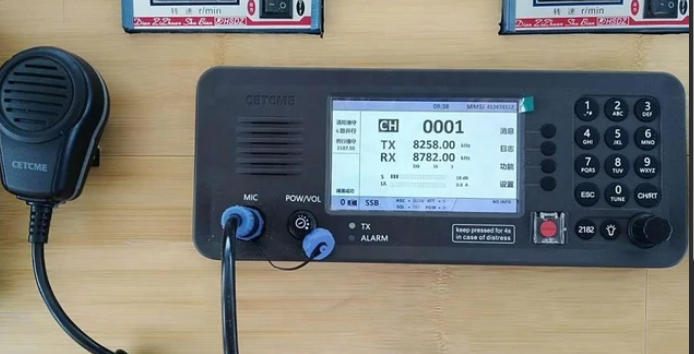Introduction
When a ship goes through a vessel flag change or vessel name change, it’s very important to update the communication systems. This process is known as GMDSS equipment programming service. It is also called GMDSS setup support or maritime communication programming.

These updates ensure that the ship’s distress and safety systems send the correct information. If you don’t update the GMDSS, safety alerts might send the wrong vessel name or registration. This can cause confusion or delay rescue efforts. That’s why GMDSS programming is not just important—it’s necessary.
Why GMDSS Programming Is Important
Every vessel must have working and updated communication tools. During a vessel flag change or ship reflagging, you must program the new flag state details into your equipment. Likewise, when a ship changes names, the new name must show in all safety systems.
GMDSS programming ensures:
-
- Accurate distress signal transmission
-
- Legal compliance with IMO and flag state rules
-
- Clear ship identity for marine safety operations
Failing to update this information can lead to serious safety risks and legal trouble.
What’s Included in the Programming Service
Name and Flag Update
We update your vessel name and flag inside the GMDSS system. That includes changes to the MMSI number, call sign, and registry information.
Equipment Reconfiguration
All radio and satellite systems are reprogrammed. This helps them match your new vessel details.
Full Testing After Setup
After we finish programming, we test all equipment to make sure everything works properly.
Certification
We also provide official documentation to confirm your ship is compliant and ready to sail.
Devices That Need GMDSS Programming
Some of the most common systems include:
-
- VHF radios with DSC
-
- MF/HF radios
-
- INMARSAT systems
-
- EPIRBs (Emergency Beacons)
-
- SARTs (Rescue Transponders)
Each of these tools must match your ship’s current identity.
10FAQs
1. What is GMDSS programming?
It is the process of updating ship communication tools after a name or flag change.
2. Why is it important during a vessel name change?
It ensures the ship sends accurate alerts using the correct name and ID.
3. What happens if I don’t update GMDSS after reflagging?
You may face legal issues, and emergency systems might fail to work properly.
4. Do I need to reprogram the EPIRB after changing the ship’s name?
Yes, the EPIRB must match the new ship name and MMSI number.
5. How long does the programming process take?
Usually, it takes a few hours depending on the vessel’s systems.
6. Can the updates be done remotely?
Some updates can be done remotely, but most require onsite work.
7. Is reprogramming mandatory after a flag change?
Yes, it’s a legal requirement for compliance and safety.
8. Will I receive a certificate?
Yes, we issue a certificate to confirm the update.
9. Who performs the programming?
Certified marine engineers or technicians handle it.
10. Can you help with both name and flag updates?
Absolutely. We handle both types of changes in one service.


Latest Products
YDK Technologies MKN020 Gyro compass connection box
AED 3,960.0Original price was: AED 3,960.0.AED 2,850.0Current price is: AED 2,850.0.Onwa KM-8X 5-in-1 Marine Bundle Set Radome – GPS, Chartplotter, EchoSounder, AIS, Radar
8-inch GPS Chart Plotter with AIS and Radar
Onwa KM-8A (BUNDLE) 8-inch Color TFT LCD GPS Chart Plotter with Class B+ AIS Transponder MFD [BUNDLE]